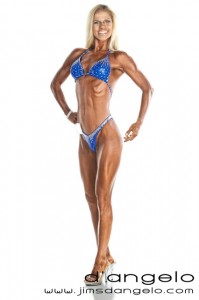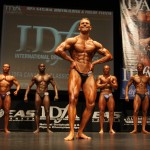 [Lisa] Yorktown, are you intentionally trying to thwart my weight loss efforts? Within the last few months not one, but two frozen yogurt shoppes have opened, Twist and Luvin Spoonfuls (both have delicious frozen yogurt). In addition, two new ice cream shoppes, JJ’s Scoop House and Victoria’s Confections, have opened as well. I have not visited the latter two yet but I am sure they too are yummy. So what’s the big deal? I’ll tell you, this stuff is my addiction. Can I have it? Yes. Limiting the intake amount and figuring out the nutritional content accurately is the challenge. The other night I enjoyed a 5 oz. cup of non-fat frozen yogurt. No problem I’ll just figure out the carbs, fat and protein. I even had the owner print out the nutritional breakdown. I went home and did the math. Carbs 29g fat 0g, protein 3g. Not so bad. I eagerly reported my findings to Mike the next morning. Apparently, Mike and I use different math. He started explaining serving size, grams, ounces divide by the circumference of the moon multiply by the number of minutes in a month, blah, blah, blah my eyes rolled back in my head. The only thing I know for sure is that I underestimated. I probably do this when eating out too. It is hard to know for sure what a serving size equals or how exactly food is prepared. Was my egg white omelet fried in butter? Was more than steam used to prepare my steamed asparagus? Mike, some tips on how to deal with this please.
[Lisa] Yorktown, are you intentionally trying to thwart my weight loss efforts? Within the last few months not one, but two frozen yogurt shoppes have opened, Twist and Luvin Spoonfuls (both have delicious frozen yogurt). In addition, two new ice cream shoppes, JJ’s Scoop House and Victoria’s Confections, have opened as well. I have not visited the latter two yet but I am sure they too are yummy. So what’s the big deal? I’ll tell you, this stuff is my addiction. Can I have it? Yes. Limiting the intake amount and figuring out the nutritional content accurately is the challenge. The other night I enjoyed a 5 oz. cup of non-fat frozen yogurt. No problem I’ll just figure out the carbs, fat and protein. I even had the owner print out the nutritional breakdown. I went home and did the math. Carbs 29g fat 0g, protein 3g. Not so bad. I eagerly reported my findings to Mike the next morning. Apparently, Mike and I use different math. He started explaining serving size, grams, ounces divide by the circumference of the moon multiply by the number of minutes in a month, blah, blah, blah my eyes rolled back in my head. The only thing I know for sure is that I underestimated. I probably do this when eating out too. It is hard to know for sure what a serving size equals or how exactly food is prepared. Was my egg white omelet fried in butter? Was more than steam used to prepare my steamed asparagus? Mike, some tips on how to deal with this please.
[Mike] What Lisa failed to mention in the above is that I am an ice cream FREAK! I get almost as excited talking about ice cream as I do training. So when Lisa came in the other morning talking about her frozen yogurt escapades, I was quick to compare notes as I had been on the same escapade the previous week hitting up Twist and Luvin Spoonfuls.
As I’ve mentioned in previous blog posts and articles: The most important part of fat-loss is making sure you take in the proper amount of calories, carbs, proteins, and fats relative to your individual needs. Is frozen yogurt okay while dieting? Yes. So are Pop Tarts but I don’t like them so they’re not in my diet.
Seriously…there is a major difference between eating for health and eating for fat-loss. While most “healthy” foods tend to be less calorically dense per volume and provide nutrients you can’t get from sugary, fat laden foods, occasional consumption will not affect your fat-loss efforts as long as you remain in a caloric deficit.
Now onto the serving size conundrum. I looked up the nutrition info for several self-serve frozen yogurt joints and noticed an interesting trend. Each provides their nutrition content based on every ½ cup serving or 83 grams. Seems pretty straight forward but in fact is very misleading. Let me use a personal example to illustrate.
I go and get my favorite Cookies n’ Cream Fat-free frozen yogurt the other day. According to the store’s nutritional info, every ½ cup has 22 grams of carbs and 3 grams of protein equaling 100 calories. I throw my cup up on the scale and it reads 8 oz. Perfect…since a ½ cup is 4 oz. I just need to double the above numbers to figure out how many calories, carbs and proteins I just took in. But in doing so I would be dramatically underestimating what I actually took in.
Here’s why:
When they list the serving size they provide two means of measurement—size (½ cup) and weight (83 g). Since I am not showing up to the store with a measuring cup I can only rely on the scale at the register to tell me how much frozen yogurt I’ll soon be enjoying. In this case it’s 8 oz. of creamy goodness.
However I do not want to know how many ounces I am consuming I want to know how many GRAMS so that I can figure out the actual number of servings. What comes next is some very basic arithmetic that breaks down like this:
There are 226 grams in 8 oz. (I found a conversion calculator through Google). Divide 226 (the amount consumed) by 83 (the listed serving size) and we learn that I had 2.7 servings.
To assume my 8 oz. serving equals two servings instead of 2.7 would be an honest mistake since a ½ cup in FLUID OUNCES is 4 fluid ounces. But we’re talking frozen yogurt not fluid which is why we must go by weight to understand how much we are actually taking in. This was the mistake Lisa made and is a common one amongst those who are doing their best to track their food intake.
Nutrition labels are written in a way to intentionally confuse and deceive people into thinking they are taking in less than they actually are. Companies are well aware that a portion of their market is calorie conscious so they do their best to not scare off potential customers by positioning their product as being healthier or lower in calories than it actually is. As the consumer it is up to you to understand this and take the extra initiative to make ensure that how much you are consuming is actually how much you are consuming.






